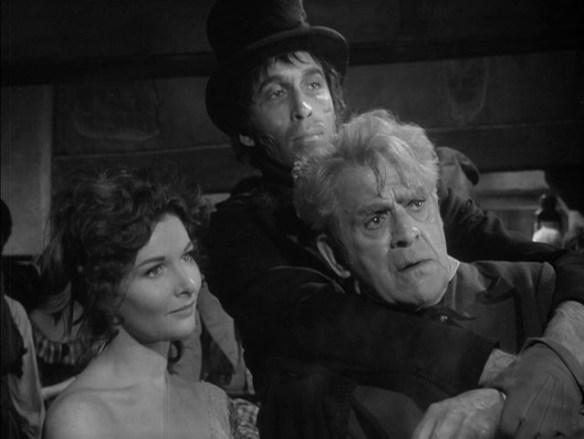Hello folks, and welcome back to Wrong Every Time. Alongside the week’s usual scattering of films and videogames (in spite of my grumbling, I am still bashing my head against Hades 2), this week saw us screening the first three episodes of Critical Role’s fourth campaign, which trades out their usual DM Matt Mercer for Dimension 20’s Brennan Lee Mulligan, alongside essentially doubling the table size to a total of thirteen rotating players. All of this sounded like it might amplify the inherently confusing, unwieldy nature of Critical Role’s live sessions, but the results have been astonishing; to be honest, this campaign has so far been the most compelling D&D project I’ve ever witnessed.
Mulligan’s strategy of breaking his sessions into concrete scenes has made for a far more propulsive, coherent ride than the CR standard, the world they are revealing feels substantive, lived-in, and rich in thematic implications, and the cast are inhabiting a dynamite array of characters, successfully rallying back from the “everyone’s trying to be Jester” doldrums of campaign three. Mulligan’s influence and the cast’s clear renewed enthusiasm have turned Critical Role into genuine appointment television, and if you’ve never seen a live play before, I’d say this is a fine chance to see what peak performance looks like. Regardless, I have of course made time for more of our regularly scheduled movie screenings, so let’s break down some films in the Week in Review!
Our first viewing this week was Corridors of Blood, a ‘58 period drama starring Boris Karloff as Dr. Thomas Bolton, a famed 1840s surgeon who is determined to divorce pain from the surgery process. His experiments with nitrous gas and opium culminate in a disastrous demonstration, and as his professional reputation crumbles he becomes addicted to his own tools, eventually falling in with the notorious thugs of the Seven Dials tavern.
Considering its title and star, I was expecting Corridors of Blood to be an indulgent slice of Hammer-style horror, with plenty of leering ghouls and perhaps a zombie or something. Instead, what I received was a convincingly melancholy portrait of personal ruin, with Karloff expressing the full range of his ornate sensibilities in his transformation from an absent-minded yet honorable doctor to a shuddering wreck. Though a touch repetitive in its cycles of experimentation, demonstration, and defeat, Corridors of Blood is an evocatively shot showcase for one of cinema’s masters of melodrama, demonstrating the oversized charisma and wounded vulnerability Karloff brought to so many mid-century productions. If you’ve only seen him in Frankenstein, you’re missing out!
Our path through the Godzilla canon then continued with Godzilla vs Hedorah, the franchise breaking into the ‘70s with a vivid entry helmed by Yoshimitsu Banno. Feasting on the pollution of earth’s factories, the monster Hedorah grows from tadpole to titan, releasing toxic clouds of sulfuric gas all the while. Only Godzilla can stand up to this foe – but can even he defeat a creature without stable form, whose body is so toxic as to melt any that might seek to topple it!?
Godzilla vs Hedorah marks a dramatic realignment of the franchise, shifting from the family-friendly childhood lessons of All Monsters Attack to the most grim, violent Godzilla film yet. Hedorah is a truly horrifying monster, poisoning all that it encounters, leaving first grim ashen scars and then fields of bodies in its wake. Scenes of him raining toxic gas down on choking, collapsing innocents feel like genuine war footage, the first since Godzilla Raids Again, and a provocative choice in the context of America’s Vietnam war crimes currently coming to light.
As you might expect, I quite enjoyed this grim, politically pointed turn for Godzilla, as well as the film’s many other eccentricities. There’s a hallucinogenic subplot involving a ‘70s dance club that culminates in a scene evoking Jacob’s Ladder, and also charming animated sequences of Hedorah’s destruction, demonstrating the direct link between our pollution and his power. Even the lighting is distinct here, sapping the colors of their saturation to present a world that genuinely feels on the brink of disaster. Banno brought a compelling slate of new ideas to Godzilla, so it’s unfortunate that his worst one (having Godzilla fly using the power of his atomic breath) was so bad he was forever barred from touching the franchise again.
Next up was Conan the Destroyer, the sequel to Conan the Barbarian, with Arnold Schwarzenegger reprising his role alongside the always-welcome Mako. They are here teamed up with warriors played by Grace Jones and Wilt Chamberlain, intent on recovering a sacred gem for a princess (Olivia d’Abo) so that Conan can be reunited with his lady love. Their journey will encompass dangerous feats, shocking betrayals, and plenty of waving swords around, as Conan proves again he is master of all that he surveys.
I was warned that Conan the Destroyer was worse than its predecessor, and that’s largely true. The original Conan the Barbarian is defined by grace and confidence; though it stars a bodybuilder and concerns itself largely with thievery and ass-kicking, it buys fully into its own reality, and offers such a consistent stream of inventive challenges that the audience’s faith in Conan’s reality never wavers.
Conan the Destroyer is a clunkier feature, marred with ill-fitting grasps at humor and significantly more shapeless than its predecessor, to say nothing of the absence of a fitting replacement for the villainous James Earl Jones. Nonetheless, it’s still a delight to watch Arnie wave his sword around, and if you’re a particular fan of sword and sorcery fodder, even lesser Conan remains superior to the bulk of the once-saturated genre. Any film that concludes with Grace Jones and Schwarzenegger grappling a lovingly sculpted lizard god can only be so bad.
We then checked out The Dead Don’t Die, a recent Jim Jarmusch horror-comedy starring Bill Murray and Adam Driver as two police officers in the sleepy town of Centerville, which suddenly finds itself under attack by the living dead. They lead an ensemble cast of off-kilter locals that includes Tilda Swinton, Steve Buscemi, Danny Glover, and Chloë Sevigny, all of whom do their best in their own strange ways to handle the sudden intrusion of zombies into their quiet, unobtrusive community.
The Dead Don’t Die is less of a zombie movie than a quiet observational comedy that is at a certain point invaded by zombies, whose presence does little to mitigate the deadpan affectations and quiet quasi-wit of its distinguished principles. Both Murray and Driver excel at this sort of minimalist comedy, where the intent is not to elicit outright guffaws, but instead polite chuckles of recognition and amusement. Buscemi gets to be a crotchety farmer whose cows keep disappearing, Tilda Swinton wields both katana and scottish accent with equal recklessness, and Adam Driver once again proves he is leading man and character actor in one, able and willing to harness his distinctive look to play unflattering, unforgettable misfits. It’s a handful of the last century’s best actors doing a deadpan genre bit – it may not pay off so much as fade out, but you certainly won’t regret the ticket fare.




